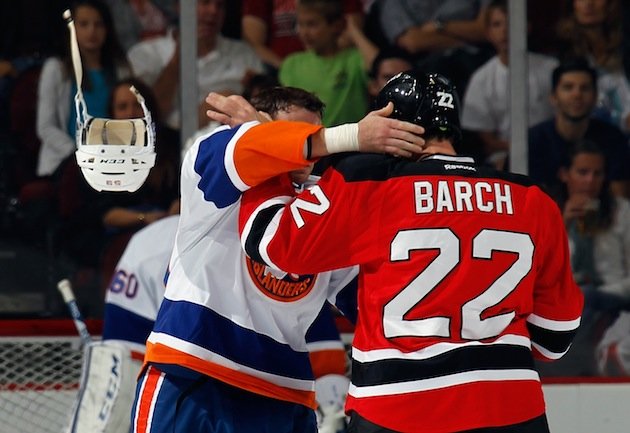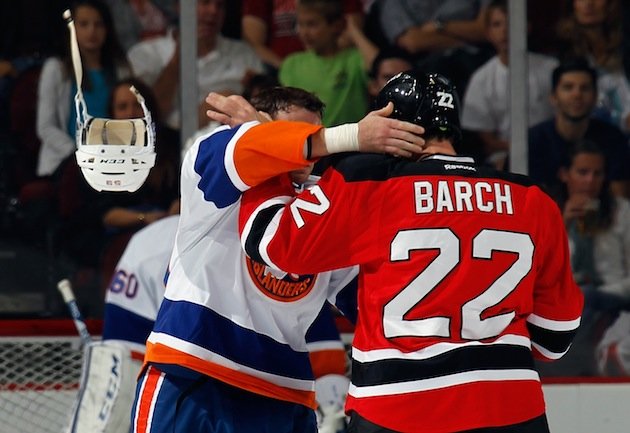The NHL Hockey season starts tomorrow with games in Montreal, Edmonton, and Chicago. For nine out of every ten sports fans, this will have about as much impact on their lives as missing one quarter of a regular season football game because they had to run out to the store to get some pickles. The fringe popularity of hockey can be seen clearly in the low importance levels the sport receives on our daily and seven-day almanac forecasts. For the hockey fan though, it is a big day! Hockey fans have many reasons why they love hockey and the start of every season is a time when fans of all teams can be excited and optimistic about their team’s potential… even the Florida Panthers. The NHL is known to be one of the most flexible and quick-reacting leagues when it comes to tweaking the rules to fit the needs of their players, owners, and sponsors. A couple new rules this year highlight this characteristic.
No More Jersey Tucking
Not a new rule technically, the NHL has decided to start enforcing a rule against a player tucking in his jersey which has been part of the rulebook for 50 years. It doesn’t take long to realize that despite the head-fake towards explaining this rule through a ref’s easier identification of the player from behind, that this rule is all about the official sponsors of hockey. The makers of hockey pants (heavily padded) realized long ago that they could get some free advertising by putting their logo on the area that is exposed when a player tucks his jersey. No more!

Fighting with Helmets, Visors, or None
For years the most hotly debated topic about hockey in the general media has been the place of fighting in the game. In our post, Why Do People Like Hockey, the seventh reason was “Blood (and Consent.) There are two new rules that affect how players will fight this year.
Players who fight this year, in addition to the normal five minute penalty for fighting, will be given an additional two minute penalty if they take their own helmet off. You might be wondering why a player who is about to get into a bare-knuckle fist-fight on ice would take his own helmet off. Hockey is governed by a highly ritualized set of unwritten rules. There’s a big section of this code that pertains to fighting. For instance, a fighter will not fight a player who isn’t a fighter during the normal course of play but, if a non-fighter makes a dirty play, he’s likely to be challenged by a fighter on the other team and he’s got to fight back. Players who fight a lot have more in common with fighters on other teams than they often do with the skill players on their team. So it’s probably no surprise that they don’t wear visors because a visor is likely to break the hand of whoever is fighting against them.
This year is the first year under a new collective bargained agreement between players and owners that requires new players to wear visors on their helmets that protect their eyes. Joe Haggerty explains that while this rule is meant to protect injuries, it may also cause some injuries for players who are determined to fight:
“Guys have been fighting long enough and punching enough guys in the helmet that your hand is a big, calloused club. You’re used to that. Even when guys don’t have visors on, you’re still hitting a lot of helmet. It takes more area away from the face where you can make contact, so it will be a learning curve.”
The solution? Until the league outlaws fighting all-together, the players will find their own solutions. In the preseason, Krys Barch and Brett Gallant found their own solution. They took each other’s helmets off before beginning to throw punches! David Singer of hockeyfights.com (yes, that exists) commented that this was “Victorian era honor. The Code. A ridiculous loophole on display.” Which is more ridiculous though, the response or the rule? There’s a set of hockey players that make their living partially through fighting. Unbroken hands are a job requirement and punching a visor or helmet too hard is a good way to lose a place on the team; one that, once gone, may never be regained.

